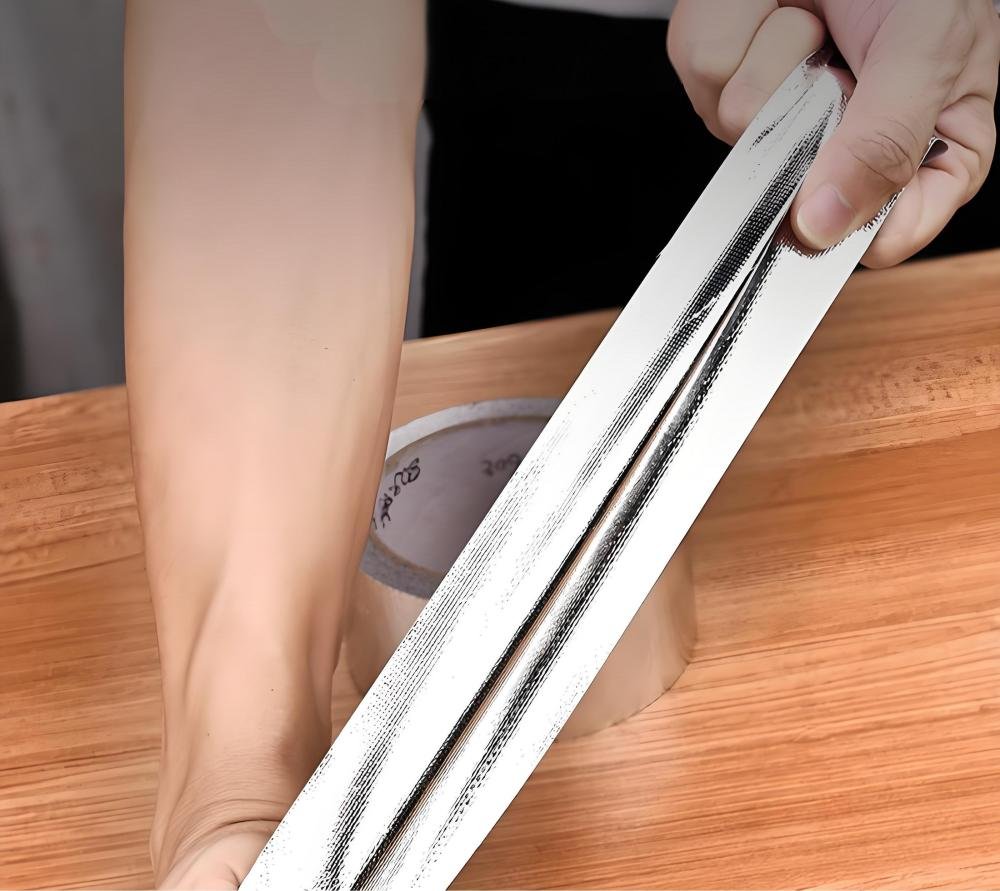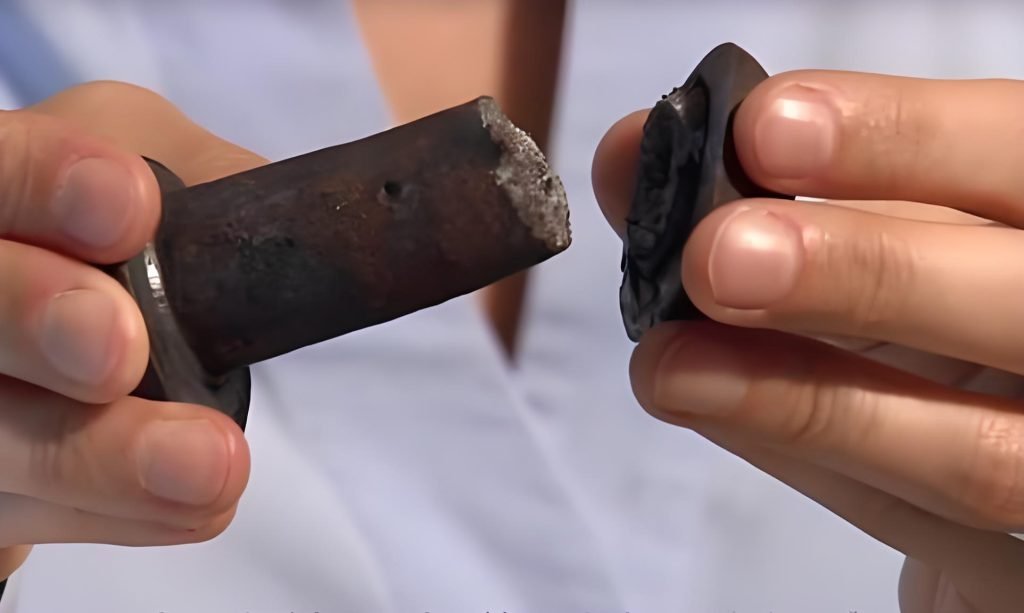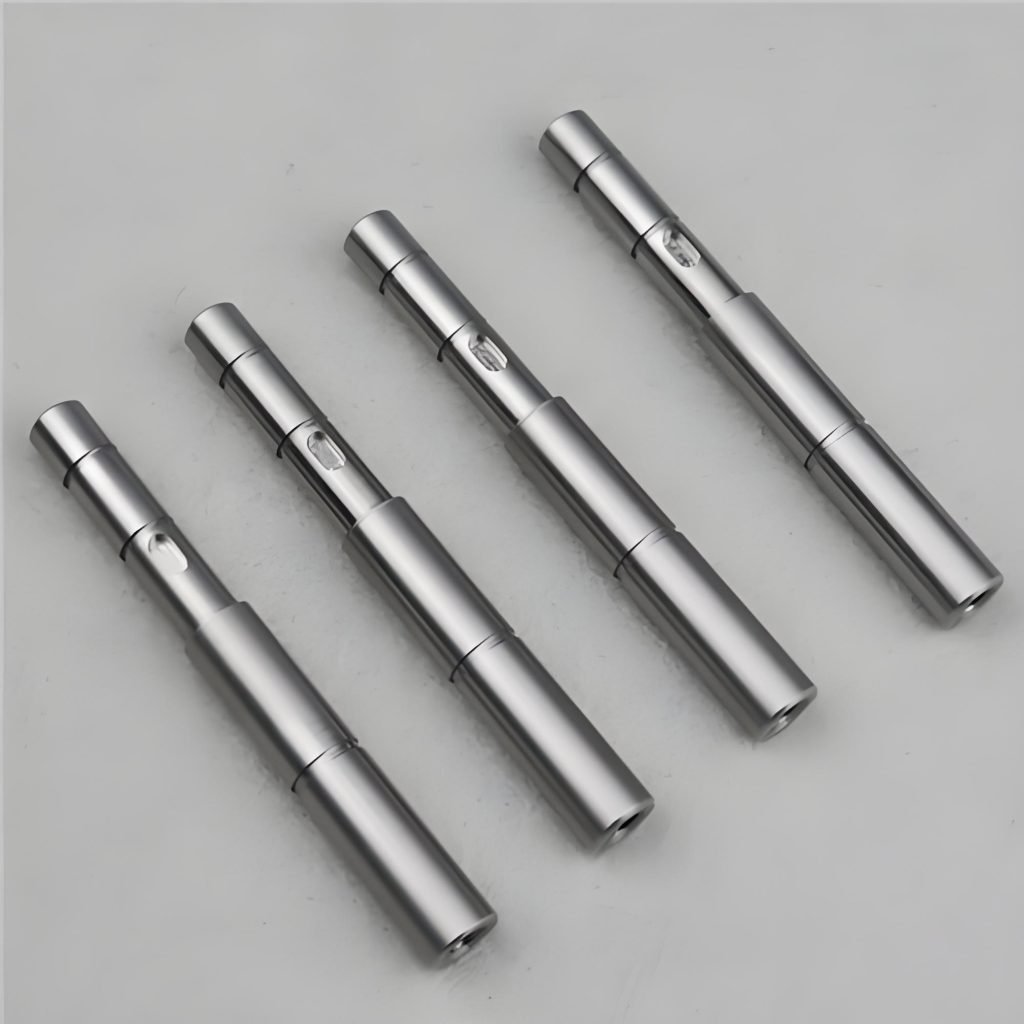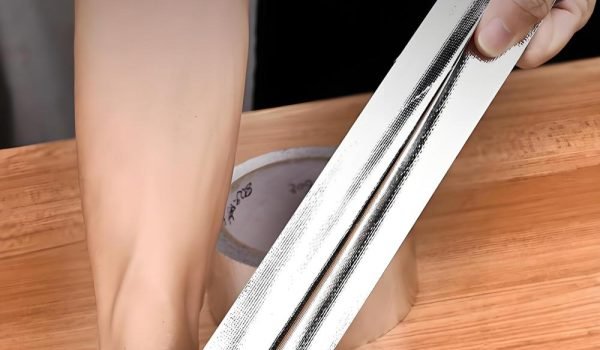You might be surprised to learn that nearly 80% of all mechanical failures are attributed to stress caused by forces acting on materials. One critical type of stress is shear stress, which occurs when forces parallel to a material’s surface cause it to deform by sliding along a plane parallel to the force.

Understanding shear stress is vital for engineers to design and develop safe and efficient structures, mechanical components, and fluid systems. When a material is subjected to a force that causes it to slide or deform, the resulting stress can lead to material failure if not properly managed.
By grasping the concept of shear stress, engineers can better predict and prevent failures in load-bearing applications, ensuring the integrity and reliability of their designs.
Understanding Shear Stress: The Fundamental Concept
Understanding Shear Stress: The Fundamental Concept
Shear stress, a critical parameter in mechanics of materials, is essential for understanding the behavior of materials under different loading conditions. As you delve into the world of engineering, grasping the concept of shear stress becomes vital for designing and analyzing structures and machines.
Definition and Basic Principles
Shear stress occurs when a force is applied parallel or tangential to a surface, causing deformation by sliding or rotating. This type of stress is different from normal stress, which acts perpendicular to a surface. The unit of shear stress is typically measured in Pascals (Pa) or pounds per square inch (psi). You need to understand that shear stress is a crucial factor in determining the stability and integrity of materials and structures.
How Shear Stress Differs from Other Stress Types
Shear stress differs significantly from other types of stress, such as tensile and compressive stress, in both direction and effect on materials. While normal stress causes elongation or shortening, shear stress results in angular deformation. The key differences are:
* Shear stress acts parallel to a surface, whereas normal stress acts perpendicular to it.
* Different materials respond uniquely to shear stress compared to normal stress.
* The combination of normal and shear stresses creates complex stress states.
Understanding these differences is crucial for proper material selection and structural design, especially in applications where multiple stress types occur simultaneously. You must consider these factors to ensure the safety and durability of your designs.
The Physics Behind Shear Stress
To comprehend shear stress, it’s essential to delve into the physics that govern force distribution and deformation in materials. Shear stress occurs when a force is applied tangentially to a surface, causing deformation.
Force Distribution in Materials
When a material is subjected to shear stress, the force is distributed across its surface. This distribution is not uniform and depends on the material’s properties and the nature of the applied force. Understanding how forces are distributed within a material is crucial for predicting its behavior under shear stress.
Deformation Mechanics
Deformation mechanics under shear stress involves the sliding of adjacent layers of material relative to each other, resulting in angular displacement. The relationship between shear stress and the resulting deformation, known as shear strain, is described by the material’s shear modulus. This property is vital in engineering design as it helps predict how materials will behave under different loading conditions.
In elastic materials, shear deformation is reversible up to the elastic limit. Beyond this limit, materials may undergo permanent deformation or failure. Understanding deformation mechanics is essential for designing structural components, fluid systems, and other applications where shear stress plays a critical role.
Shear Stress Formula and Calculations
To accurately assess the integrity of materials under different loads, engineers rely on the shear stress formula. This formula is crucial for calculating the stress that occurs when a force is applied parallel or tangential to a face of an object, causing it to deform by sliding along a plane parallel to the force.
Basic Shear Stress Equation
The basic shear stress equation is given by τ = V/A, where τ is the shear stress, V is the shear force applied, and A is the cross-sectional area resisting the force. This equation provides a straightforward method to calculate the average shear stress in a material.
For more complex geometries and loading conditions, variations of this equation are used, taking into account factors like the distribution of shear stress across the section.
Units and Dimensions
Shear stress is measured in pascals (Pa) in the SI system, equivalent to newtons per square meter (N/m²). Understanding the units is crucial for accurate calculations and interpretation of results. In engineering practice, other units like psi (pounds per square inch) are also commonly used, especially in systems where imperial measurements are prevalent.
Practical Calculation Examples
Practical applications of the shear stress formula can be seen in various engineering components. For instance, a rectangular beam with a 50 mm × 100 mm cross-section subjected to a shear force of 10 kN experiences an average shear stress of 2 MPa. In circular shafts under torsion, the maximum shear stress occurs at the outer surface and is calculated using τ = Tr/J, where T is the torque, r is the radius, and J is the polar moment of inertia.
Other examples include bolted connections where shear stress in a bolt is determined by dividing the applied force by the bolt shank’s cross-sectional area, and I-beams where shear stress varies across the cross-section, peaking at the neutral axis within the web.
Types of Shear Stress
Understanding the different types of shear stress is essential for designing and analyzing structural components and mechanical systems. Shear stress manifests in various forms depending on the loading conditions and material properties.
Direct Shear Stress
Direct shear stress occurs when a force is applied parallel or tangential to a surface, causing the material to deform by sliding along a plane. This type of stress is commonly observed in bolts, rivets, and other fasteners. The calculation of direct shear stress is straightforward, involving the force applied and the cross-sectional area resisting the force.

Torsional Shear Stress
Torsional shear stress is generated when a twisting moment is applied to a shaft or a structural member, causing it to twist. This type of shear stress induces a swirling motion and is critical in the design of shafts, axles, and other torsion members. Torsional shear stress is a moment of shear stress that twists the structure or induces swirling motion of soft matter systems.
Bending Shear Stress
Bending shear stress occurs in beams and structural members subjected to transverse loading, creating internal shear forces perpendicular to the longitudinal axis. Unlike direct shear, the distribution of bending shear stress varies across the cross-section, typically following a parabolic distribution in rectangular sections. The maximum bending shear stress in a rectangular beam occurs at the neutral axis and can be calculated using the formula τ = VQ/Ib, where V is the shear force, Q is the first moment of area, I is the moment of inertia, and b is the width.
Bending shear stress is particularly important in the design of beams, floor systems, and other structural elements that carry transverse loads. In thin-walled sections like I-beams, the web primarily resists bending shear stress while the flanges primarily resist bending moments.
Shear Stress in Different Materials
Different materials respond uniquely to shear stress, affecting their performance in engineering applications. Shear stress is a critical factor in material selection and design for various structures and machines.
Metals and Alloys
Metals and alloys exhibit a range of responses to shear stress, depending on their composition and microstructure. For instance, ductile materials like mild steel can withstand significant shear stress before failing, whereas brittle materials are more susceptible to shear fracture. Understanding these properties is crucial for designing components that are subject to shear forces.
Polymers and Composites
Polymers and composite materials have complex shear stress behaviors due to their anisotropic properties. The orientation of fibers in composites, for example, can significantly affect their shear strength. Designers must consider these factors when using such materials in structural applications, ensuring they can resist shear stresses without failing.
Concrete and Building Materials
Concrete has relatively low shear strength compared to its compressive strength, typically around 8-15% of the compressive value. This necessitates shear reinforcement in structural applications, such as reinforced concrete beams using stirrups or bent-up bars to resist shear forces. Masonry structures are also vulnerable to shear failure, particularly during seismic events, requiring special design considerations.
The Importance of Shear Stress in Mechanics of Materials
Understanding shear stress is crucial for analyzing material strength and designing structural elements. As you delve into the world of mechanics of materials, you’ll find that shear stress plays a significant role in determining the integrity of materials under various loads.
Role in Material Strength Analysis
You need to consider shear stress when analyzing material strength because it directly affects how materials respond to different types of loading. Material strength analysis involves evaluating how materials behave under various stress conditions, including shear stress. By understanding how shear stress impacts material strength, you can better design and optimize structural elements to withstand different types of loads.
Relationship with Material Failure
Shear stress is closely related to material failure, as excessive shear stress can lead to catastrophic failures. When materials are subjected to shear stress, they can deform or fail in ways that are different from tensile or compressive stress. Understanding this relationship is crucial for predicting and preventing material failures in various engineering applications.
Impact on Design Considerations
When designing structural elements, you must consider the impact of shear stress on the overall design. Design considerations for shear stress often govern the sizing of beams, connections, and torsional members. You should apply higher safety factors to shear stress calculations due to the potentially catastrophic nature of shear failures. Additionally, stress concentration factors for shear can be significantly different from those for normal stress, requiring special attention around geometric discontinuities.
As you design structural elements, you’ll need to consider the interaction between shear stress and other stress types, often through interaction equations that limit combined stress states. Modern design approaches increasingly use reliability-based methods that consider the statistical distribution of shear loads and material properties to achieve consistent safety levels.
Shear Stress in Beams
When it comes to beams, shear stress is a critical factor that engineers must carefully consider. Beams are structural elements that withstand loads from various directions, and their ability to resist shear stress is crucial for the overall integrity of a structure.
Shear Force Diagrams
Shear force diagrams are graphical representations that illustrate the variation of shear force along the length of a beam. These diagrams are essential tools for engineers to visualize and calculate the shear stress at different points in the beam. By analyzing these diagrams, you can identify the maximum shear force and its location, which is critical for designing beams that can withstand shear stress.
Distribution of Shear Stress in Beam Cross-Sections
The distribution of shear stress across a beam’s cross-section is not uniform and varies depending on the shape of the cross-section. For instance, in rectangular beams, the shear stress distribution is parabolic, with the maximum shear stress occurring at the neutral axis. Understanding this distribution is vital for calculating the maximum shear stress and ensuring that the beam can resist the applied loads.
Maximum Shear Stress Calculation
Calculating the maximum shear stress is a critical step in beam design. For rectangular beams, the maximum shear stress is given by τmax = 1.5V/A, where V is the shear force and A is the cross-sectional area. In circular sections, it’s 4V/3A. For I-beams, a simplified approach is used, assuming uniform shear stress in the web, calculated as τweb = V/Aweb. Advanced methods like finite element analysis provide more accurate calculations for complex geometries.
Shear Stress in Shafts and Torsion Members
When designing shafts and torsion members, understanding shear stress is crucial for ensuring the structural integrity and performance of mechanical systems. Shear stress in these components is a result of torsional forces that cause twisting.
Torsional Shear Stress Distribution
Torsional shear stress distribution across a shaft’s cross-section is not uniform; it varies linearly from the center to the outer surface. The maximum shear stress occurs at the surface, making it a critical point for failure analysis.
This distribution is fundamental to understanding how shafts behave under torsion. The formula for torsional shear stress involves the torque applied, the polar moment of inertia of the shaft, and the distance from the center to the point of interest.
Design Considerations for Shafts Under Torsion
Design considerations for shafts under torsion must account for both the maximum shear stress and the angular deformation (twist), which affects alignment and performance. The torsional stiffness, given by GJ/L, is crucial in precision machinery applications. Material selection prioritizes high shear modulus and good fatigue resistance, with alloy steels being common choices.
Additionally, stress concentration factors for geometric features like keyways and shoulders can significantly increase local shear stress. Fatigue considerations are also vital due to the cyclic nature of torsional shear stress in rotating shafts.
Shear Stress in Connections and Fasteners
Connections and fasteners are critical components in engineering, and their design relies heavily on understanding shear stress. Shear stress plays a significant role in determining the integrity and performance of these components under various loads.
Bolted Connections
In bolted connections, shear stress occurs when forces attempt to slide the connected parts against each other. The bolts resist this motion, and the shear stress is distributed across the bolt’s cross-sectional area. Proper design and selection of bolts are crucial to withstand these stresses.
Welded Joints
Welded joints are another common method of connecting components, where shear stress can arise due to external loads. The shear strength of the weld material is critical in determining the overall strength of the joint. Factors such as weld quality, geometry, and material properties influence the shear stress distribution in welded joints.
Adhesive Bonds
Adhesive bonds primarily resist loads through shear stress distributed across the bonded area. The overlap length and bond area are critical design parameters. Unlike mechanical fasteners, properly designed adhesive joints distribute shear stress more uniformly, potentially improving fatigue performance. The shear strength of adhesive bonds depends on surface preparation, environmental conditions, and the adhesive material itself. Specialized joint designs can improve shear stress distribution, increasing the load-carrying capacity.
You should consider these factors when designing connections and fasteners to ensure they can withstand the expected shear stresses. By understanding and accurately assessing shear stress, you can improve the reliability and performance of engineering components.
Shear Stress Analysis Methods
Engineers rely on various shear stress analysis methods to predict material failure and optimize designs. These methods are crucial for ensuring the safety and durability of structures and components across different industries. By understanding and applying these analysis techniques, you can significantly enhance the performance and reliability of your engineering projects.
Analytical Approaches
Analytical approaches to shear stress analysis involve mathematical formulations to predict stress distributions in materials. These methods are based on fundamental principles of mechanics and materials science, providing a straightforward way to estimate shear stress in simple geometries. You can use these approaches to quickly assess the shear stress in standard components.
Finite Element Analysis
Finite Element Analysis (FEA) is a powerful computational method used for complex shear stress analysis. FEA allows you to model intricate geometries and material behaviors, providing detailed insights into stress distributions under various loading conditions. By utilizing FEA, you can simulate real-world scenarios to optimize your designs.
Experimental Testing Techniques
Experimental testing techniques are essential for validating analytical and computational models of shear stress. Methods such as the Iosipescu shear test, V-notched rail shear test, and torsion tests are used to measure shear stress in different materials. Techniques like Digital Image Correlation (DIC) and photoelastic methods offer advanced ways to measure and visualize shear stress distributions.
By combining these experimental techniques with analytical and computational methods, you can achieve a comprehensive understanding of shear stress behavior in various materials and applications.
Shear Stress in Fluid Mechanics
Shear stress is a critical parameter in fluid mechanics, determining the interaction between fluids and their surroundings. You need to understand how shear stress affects fluid behavior to design and operate efficient hydraulic systems.
Fluid Shear Stress Principles
The magnitude of fluid shear stress depends on factors such as fluid velocity, viscosity, and the geometry of the system. For instance, in physiological contexts, the shear stress at the interface between blood and blood vessels is influenced by blood velocity and viscosity, as well as the diameter of the vessel. Understanding these principles is crucial for analyzing fluid dynamics in various engineering applications.
Applications in Hydraulic Engineering
In hydraulic engineering, shear stress plays a vital role in determining sediment transport, erosion, and deposition in rivers, channels, and coastal environments. You must consider fluid shear stress when designing pipelines to calculate pressure drop, pump requirements, and potential erosion or material degradation issues. Hydraulic structures like spillways and stilling basins are designed to manage shear stress, preventing cavitation damage and ensuring proper energy dissipation. Additionally, controlled shear stress environments in water treatment systems promote flocculation and mixing while preventing floc breakup in clarification processes. Computational fluid dynamics (CFD) models enable engineers to predict shear stress distributions in complex hydraulic systems, optimizing designs for efficiency and durability.
Applications of Shear Stress in Civil Engineering
In civil engineering, understanding shear stress is crucial for designing structures that can withstand various loads. Shear stress is a critical factor in the design and analysis of various civil engineering projects, including buildings, bridges, and highways.
Structural Design Considerations
You must consider shear stress when designing structural elements to ensure they can resist deformation and failure. Shear stress analysis helps engineers design beams, columns, and connections that can withstand various loads. This is particularly important in seismic design, where structures must resist lateral forces.
Foundation Engineering
In foundation engineering, shear stress plays a crucial role in determining the stability of foundations. You need to analyze shear stress to ensure that foundations can transfer loads to the soil without failing. This involves understanding the soil’s shear strength and the potential for shear failure.
Bridge and Highway Design
Bridge design places significant emphasis on shear stress analysis, particularly in girders, box sections, and deck systems subjected to heavy vehicle loads. Highway pavements also experience shear stress from braking and accelerating vehicles, requiring appropriate material selection and thickness design to prevent rutting and shoving. You should consider these factors when designing bridges and highways to ensure durability and safety.
Applications of Shear Stress in Mechanical Engineering
Mechanical engineers rely heavily on understanding shear stress to develop efficient and durable mechanical components and systems. Shear stress plays a critical role in the design, analysis, and manufacturing of various mechanical elements.
Machine Component Design

In machine component design, shear stress is a key factor in determining the strength and durability of parts such as shafts, gears, and bearings. By analyzing shear stress, engineers can optimize component geometry and material selection to withstand operational loads, thereby enhancing overall system reliability.
Power Transmission Systems
Power transmission systems, including gearboxes and belt drives, are subject to significant shear stresses. Understanding these stresses is crucial for designing systems that can efficiently transmit power while minimizing the risk of component failure due to excessive shear stress.
Manufacturing Processes
Shear stress is also pivotal in various manufacturing processes. For instance, metal forming operations like forging and extrusion create complex shear stress fields that determine material flow and final properties. Similarly, in machining processes such as cutting and punching, controlled application of shear stress is used to separate materials. Understanding and managing shear stress in these processes is essential for achieving desired product quality and process efficiency.
Applications of Shear Stress in Biomedical Engineering
The application of shear stress in biomedical engineering is multifaceted, influencing vascular health, tissue engineering, and the design of medical devices. As you explore the various aspects of biomedical engineering, understanding the role of shear stress becomes crucial for advancing medical technology and improving patient outcomes.
Vascular Systems and Blood Flow
Shear stress plays a significant role in vascular systems, particularly in blood flow. The force exerted by blood flow on the vascular walls influences endothelial cell function and vascular remodeling. Research has shown that shear stress can be reduced by decreasing the percentage of blood volume made up of blood cells, which in turn decreases the expression of nitric oxide synthase3 (NOS3), a gene related to NO production and vessel remodeling. Understanding this relationship is crucial for developing treatments for vascular diseases.
Tissue Engineering
In tissue engineering, shear stress is a critical factor in the design of scaffolds and the cultivation of cells. The mechanical forces exerted on cells can influence their differentiation, proliferation, and overall tissue structure. By controlling shear stress, engineers can create more functional tissue substitutes that mimic the natural environment of the body.
Medical Device Design
Medical device design must consider the effects of shear stress on both device integrity and biological interactions. For implantable and blood-contacting devices, such as heart valves, ventricular assist devices, and catheters, minimizing regions of high shear stress is crucial to prevent damage to blood cells and promote thrombosis. Designers must balance the need for efficient device operation with the limitations imposed by shear stress to ensure safe and effective medical interventions.
Examples of devices that must manage shear stress include heart valves, which are designed to minimize high shear stress regions; ventricular assist devices, which must prevent hemolysis while maintaining efficient pumping; and dialysis equipment, which balances mass transfer with shear stress limitations to prevent blood cell damage.
Preventing Shear Stress Failures
The prevention of shear stress failures requires a multi-faceted approach that includes design optimization, material selection, and rigorous testing. Shear stress failures can occur in various engineering applications, leading to significant economic losses and potential safety hazards. By understanding the causes of these failures and implementing appropriate preventive measures, engineers can design and manufacture components that are more resistant to shear stress.
Design Strategies
Effective design strategies play a crucial role in preventing shear stress failures. You can optimize component geometries to reduce stress concentrations and minimize the risk of shear failure. This involves careful consideration of factors such as load paths, material properties, and environmental conditions. By designing components with shear stress in mind, you can significantly reduce the likelihood of failure.
Material Selection
Material selection is another critical factor in preventing shear stress failures. You need to choose materials that are resistant to shear stress and suitable for the intended application. This involves considering factors such as material properties, compatibility with other components, and environmental conditions. By selecting materials that are optimized for shear stress resistance, you can enhance the durability and reliability of your components.
Testing and Quality Control
Testing and quality control are essential for ensuring that components can withstand shear stresses. You can employ various testing methods, including standardized shear tests like the V-notch beam test and torsion test, to evaluate the shear strength of materials. Non-destructive testing methods, such as ultrasonic inspection and radiography, can detect internal defects that might compromise shear strength. Additionally, process monitoring during manufacturing and proof testing at specified load levels can verify shear capacity and ensure consistent material properties.
Conclusion
In summary, shear stress is a foundational concept critical to engineering design and analysis, directly influencing material deformation, failure risk, and the reliability of structures and systems. Its physics and mathematics equip engineers to predict behavior, prevent failures, and optimize designs across applications, addressing unique challenges posed by direct, torsional, and bending shear stress.
Preventing shear stress failures demands integrated strategies: sound design, proper material selection, and rigorous testing. As materials and analysis methods advance, our ability to harness shear stress will grow, enabling more efficient and innovative solutions.
For engineers, mastering shear stress is essential—it underlies the creation of safe, efficient designs and drives progress across engineering fields.




